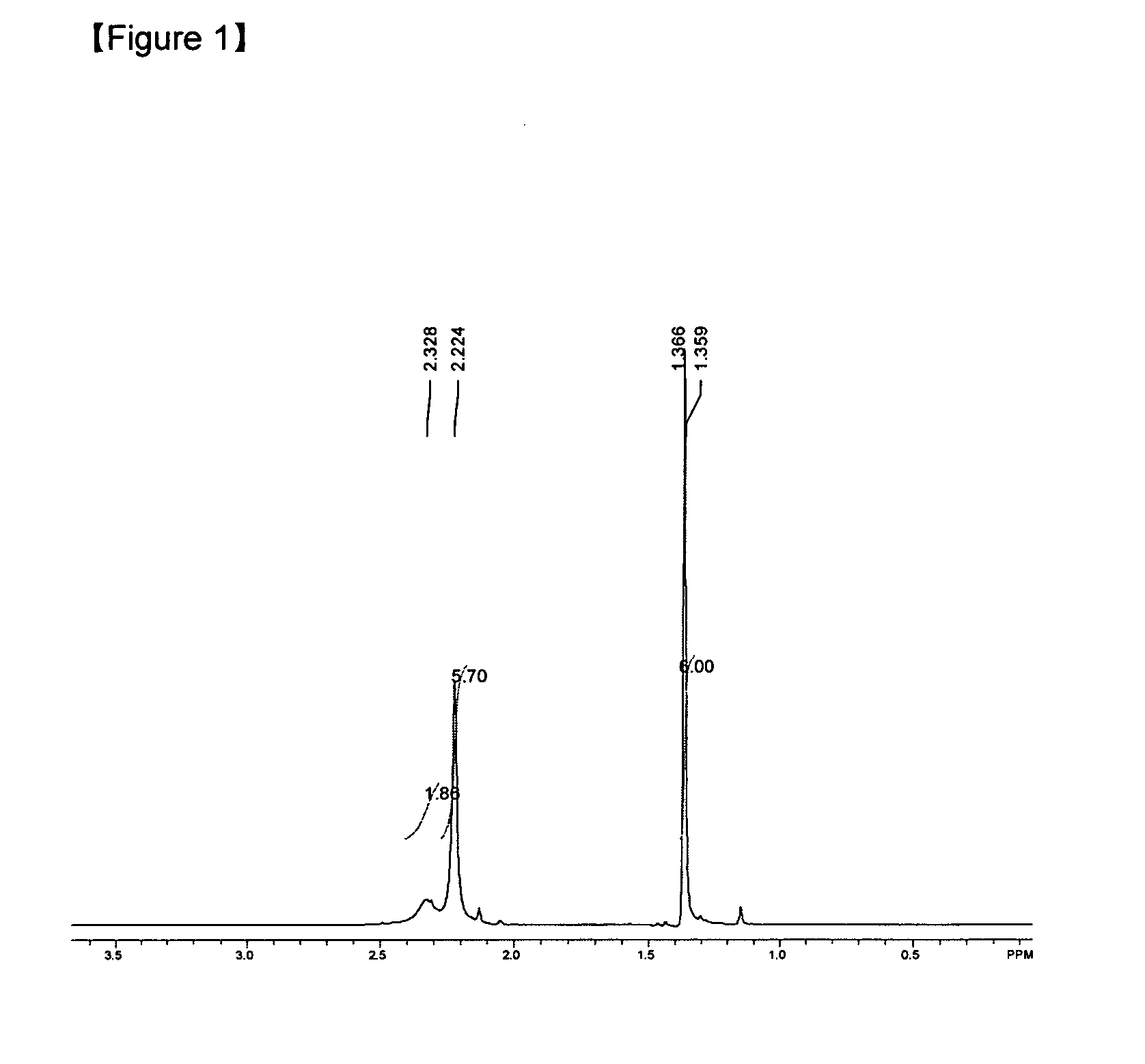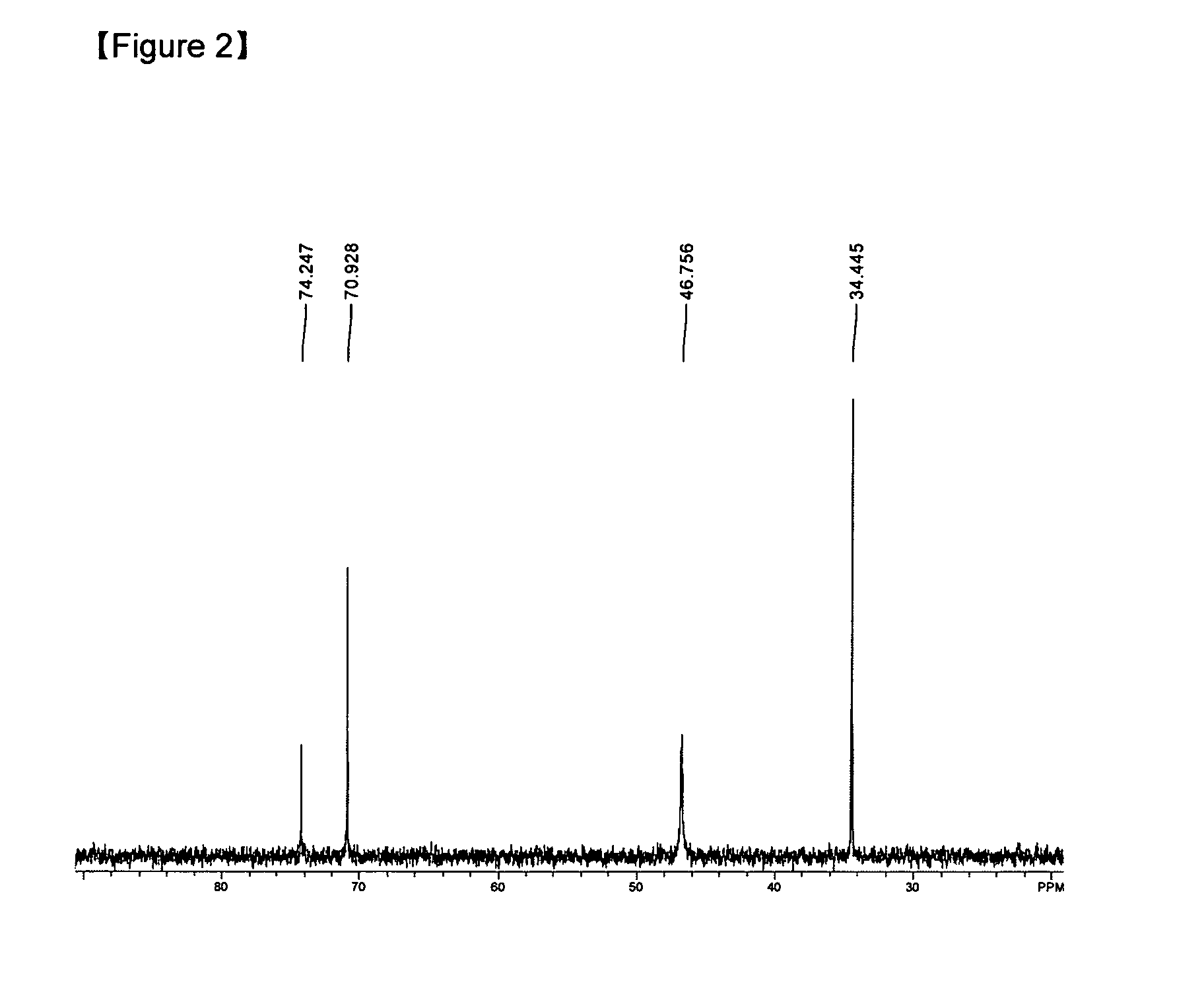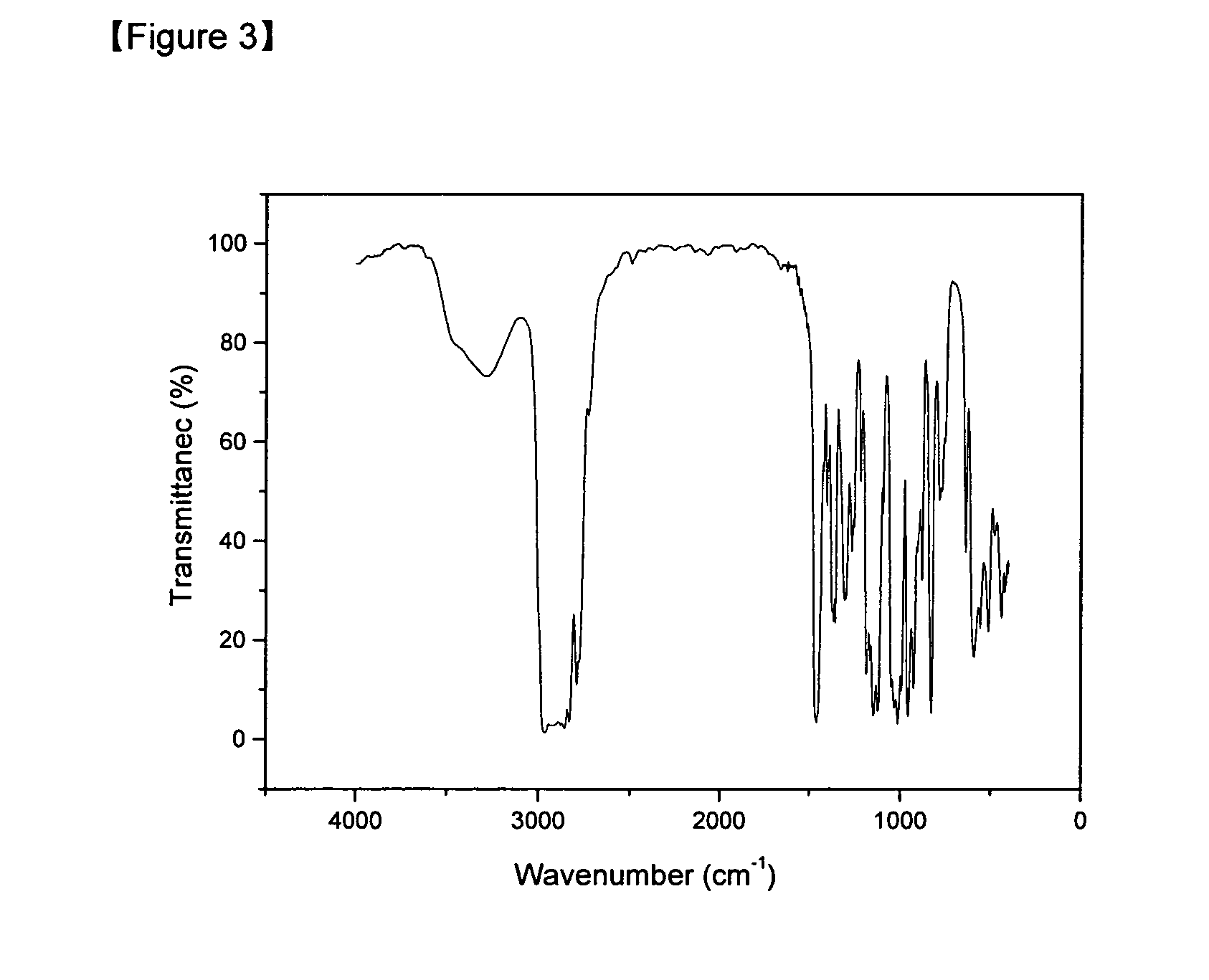Tin amino-alkoxide complexes and process for preparing thereof
a technology of amino-alkoxide complexes and complexes, which is applied in the field of tin amino-alkoxide complexes, can solve the problems of reduced quality of thin films and limited methods, and achieve high volatility and thermo-stability, and high quality
- Summary
- Abstract
- Description
- Claims
- Application Information
AI Technical Summary
Benefits of technology
Problems solved by technology
Method used
Image
Examples
example 2
Preparation of (dimethylamino-2-methyl-2-propoxy)Sn(II) [Sn(dmamp)2]
[0036]SnBr2 (1 g, 3.59 mmol) and Sodium dimethyl amino-2-methyl-2-propoxide[Na(dmamp)] (1 g, 7.18 mmol) were added in 250 mL Schlenk flask at room temperature, to which THF (50 mL) was added, followed by refluxing for 12 hours. The mixed solution was filtered to eliminate NaCl and the solvent was eliminated from the filtrate under vacuum condition. Fractional distillation was performed at 100° C. at 10−2 torr to give pure compound (93%).
[0037]Element analysis for C12H28N2O2Sn.H2O {calculated value (measured value)}: C, 39.05 (37.92); H, 8.19 (7.66); N, 7.59 (8.02).
[0038]Therefore, it was confirmed that the compound which is the same as the compound of example 1 was prepared.
example 3
Preparation of (dimethylamino-2-methyl-2-butoxy)Sn(II) [Sn(dmamb)2]
[0039]SnCl2 (1 g, 5.27 mmol) Lithium bistrimethylsilylamide [Li(btsa)] (1.76 g, 10.54 mmol) were added in 250 mL Schlenk flask at room temperature, to which ether (50 mL) was added, followed by stirring for 3 hours. The mixed solution was filtered to eliminate LiCl and the solvent was eliminated from the filtrate under vacuum condition. Fractional distillation was performed at 100° C. at 10−2 torr to obtain Sn(btsa)2. The Sn(btsa)2 was dissolved in normal hexane. 2 equivalent of dimethylamino-2-methyl-2-butanol (0.59 g, 4.56 mmol) was added thereto slowly at room temperature, followed by stirring for 6 hours. After eliminating the solvent under vacuum condition, fractional distillation was performed at 120° C. at 10−2 torr to give pure Sn(dmamb)2 compound (89%).
[0040]The 1H-NMR of the Sn(dmamb)2 compound prepared in example 3 is shown in FIG. 5.
[0041]The FT-IR of the Sn(dmamb)2 compound prepared in example 3 is shown...
PUM
| Property | Measurement | Unit |
|---|---|---|
| temperature | aaaaa | aaaaa |
| temperature | aaaaa | aaaaa |
| temperature | aaaaa | aaaaa |
Abstract
Description
Claims
Application Information
 Login to View More
Login to View More - R&D
- Intellectual Property
- Life Sciences
- Materials
- Tech Scout
- Unparalleled Data Quality
- Higher Quality Content
- 60% Fewer Hallucinations
Browse by: Latest US Patents, China's latest patents, Technical Efficacy Thesaurus, Application Domain, Technology Topic, Popular Technical Reports.
© 2025 PatSnap. All rights reserved.Legal|Privacy policy|Modern Slavery Act Transparency Statement|Sitemap|About US| Contact US: help@patsnap.com



